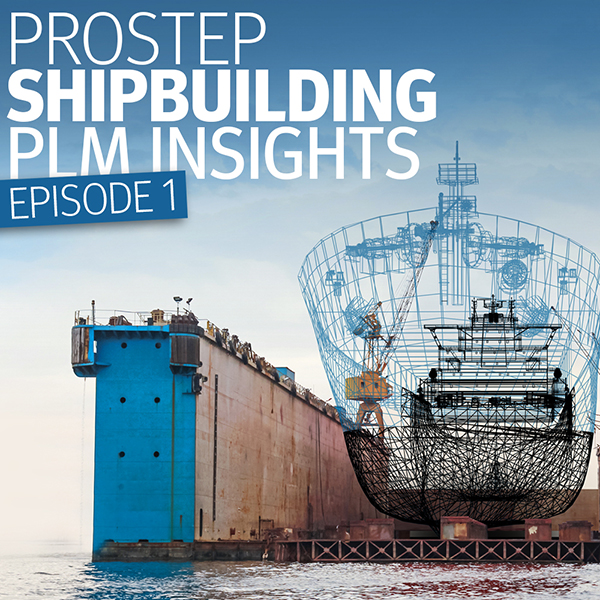
|
Successful launch of SHIPBUILDING PLM INSIGHTS seriesBy Matthias Grau PROSTEP's new series on SHIPBUILDING PLM INSIGHTS was launched on March 16. It was a successful start to the series: Around 150 participants watched the first episode, which focused on the added value of PDM and PLM for users of shipbuilding-specific CAD systems. In addition, our shipbuilding experts explained how shipyards can rebuild their PLM architectures more effectively. The series is aimed at maritime industry professionals and IT experts who want to know more about how they can use PDM and PLM to manage growing product complexity, shorten time-to-market, and meet the more demanding requirements of customers and classification societies. Here, PDM means a specific application, while PLM describes a broader concept that can be implemented with different applications. The first episode kicked off with a market overview of the challenges that shipyards face in digitalization. This overview was based on intensive discussions we have had with more than 40 shipyards worldwide over the past few years, from which we extracted their pain points. Pressure to act is caused by the increasing complexity of shipbuilding projects, the many changes to each ship and the growing effort required to manage requirements, documents and certificates. The market situation is also characterized by smaller shipyards merging into larger groups. Often, post-merger integration is complicated by outdated IT system landscapes, different legacy systems at the various sites, and the multitude of Excel spreadsheets still used to manage non-CAD data. As a result, companies have little foundation to implement complex new requirements. The most discussed topic among shipyards is what additional benefits a PDM system can offer them if they already use a shipbuilding-specific CAD system. For this reason, we have made this topic the focus of the first episode. Our colleague Jan Bitomsky explained to the participants the special features of shipbuilding-specific CAD systems, which are the reason why most shipyards do not have a PDM. They cover many PDM functions through integrated CAD data management and their focus on the shipbuilding CAx process chain. But just not all of them, which is why there are so many Excel spreadsheets. PDM systems first caught on in other industries where management of mechanical CAD files was a key requirement. Over time, however, they have been extended to include PLM capabilities such as materials management, document management, product structure management, or partner collaboration, which are also of interest to shipbuilders but are missing from shipbuilding-specific CAD systems. Most importantly, they lack powerful change management, which is one of the key functions of any PDM system. Combining the PLM capabilities of a shipbuilding CAD system with a PDM system therefore offers enormous added value, as Bitomsky pointed out. There is then only one source of truth. Document management is perhaps related to that with change management. In the product structure, you can see the CAD data, but also other data. And one can always trace which data was sent to which supplier and when. But how does one get to this single source of truth? In a second topic, Bitomsky explained to participants how they can use the enterprise architecture management approach to develop a PLM architecture that is aligned with their business requirements. These requirements are more demanding in shipbuilding than in other industries because not only the products are very complex, but also the business processes from the time of sale to delivery. This is the reason why there is still no best practice solution for PLM architecture in shipbuilding. PROSTEP supports shipyards in identifying the bottlenecks in the existing information flows based on the business objects and in determining the required capabilities for their future PLM architecture. An architecture that can combine shipbuilding-specific CAD systems, PDM and ERP systems, for example. At the end of the first episode, participants were allowed to vote on the focus of the next episode. It will take place in May and will revolve around the topic of Collaboration in Shipbuilding. You can watch the recording of the first episode here. If you would like to receive information about the second episode, sign up here. 
|
|
| © PROSTEP AG | ALL RIGHTS RESERVED | IMPRINT | PRIVACY STATEMENT | YOU CAN UNSUBSCRIBE TO THE NEWSLETTER HERE. |

